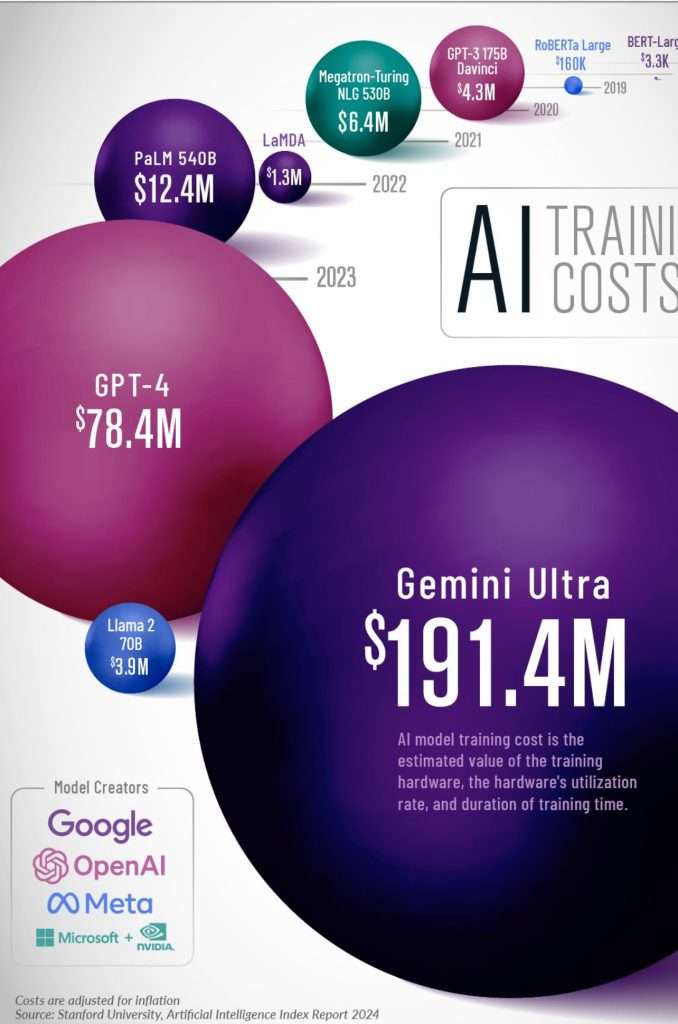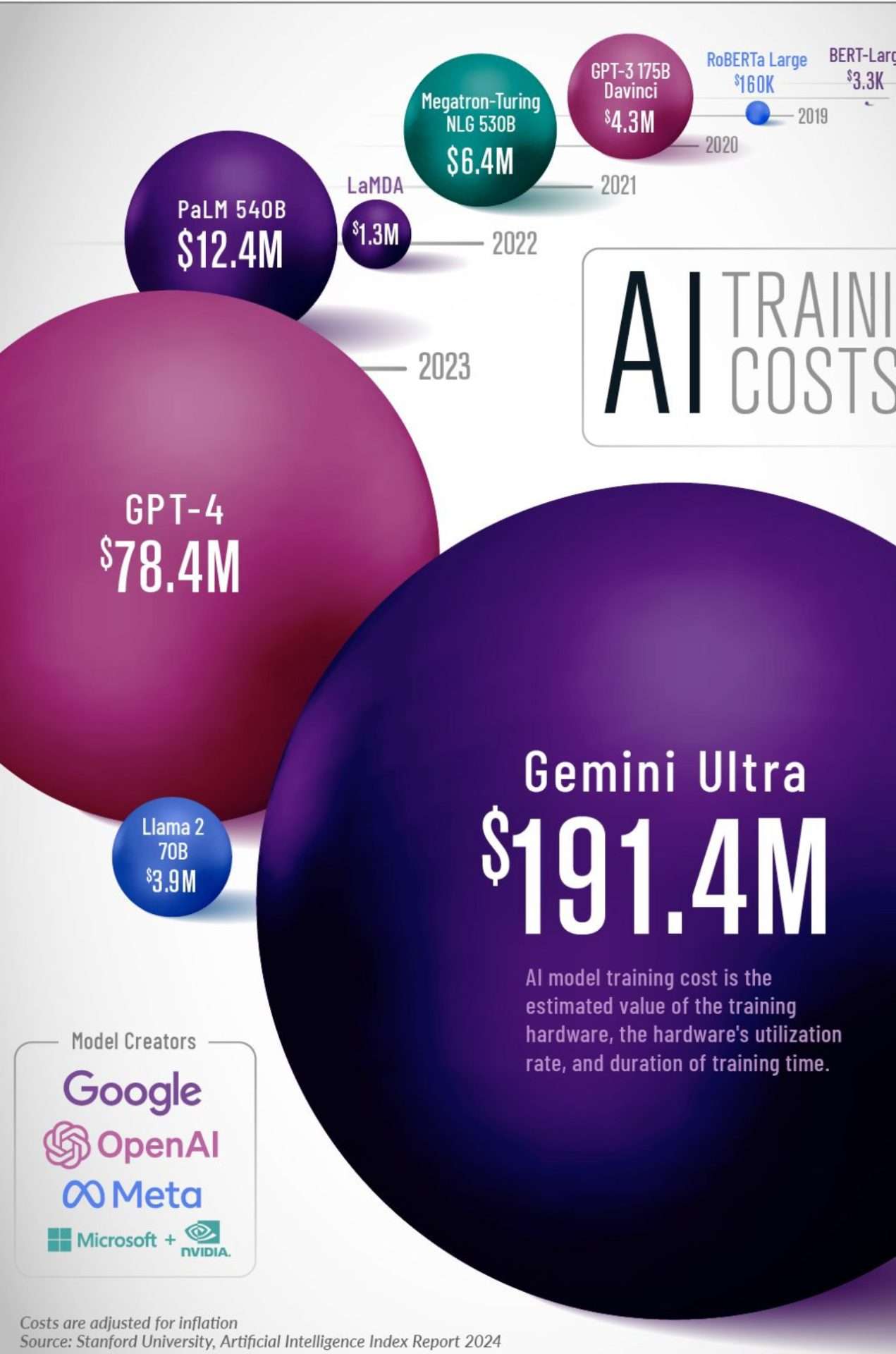In artificial intelligence, the costs of training models play a crucial role in their development and performance. According to a recent report from Stanford University, Google's Gemini model has a training cost of approximately $191 million, while OpenAI's ChatGPT-4 has a significantly lower cost of around $78 million. However, this upfront cost isn't everything. The real advantage of ChatGPT lies in its ability to learn continuously, in real-time, which makes it a difficult model to beat.

The Power of Real-Time Training
The success of ChatGPT This is largely due to its focus on continuous training and user feedback. Every daily interaction with millions of users provides valuable data that allows OpenAI to constantly adjust and improve the model.
- Continuous training and diverse data : ChatGPT is trained on a global and diverse database, allowing it to capture a wide range of communication styles, dialects, and slang. This continuous flow of data not only improves the accuracy of the responses, but also allows the model to quickly adapt to new contexts.
- Investment in infrastructure : The infrastructure needed to support continuous training includes powerful servers, cloud data storage, and advanced data processing systems. This investment ensures that ChatGPT can handle large volumes of data efficiently and in real-time.
- Dynamic optimization : The data collected allows OpenAI to make dynamic adjustments and optimize the model's algorithms based on daily usage. This provides a competitive advantage that goes beyond the initial cost of training, allowing for continuous improvement of model performance.
Training costs: more than numbers
Training an advanced AI model involves a number of significant investments, not only in terms of money, but also in time and technical resources:
- Computational resources : Training models like Gemini and ChatGPT requires an enormous amount of computational power. The data centers used must handle petabytes of data, and the cost of electricity and maintenance of these centers is considerable. For example, Google invests in specialized servers and cooling systems to keep its models running optimally.
- Data and Storage : Data collection and storage are critical. OpenAI and Google invest in cloud storage infrastructure to handle and process the huge volumes of data needed to train their models. This process includes data cleansing, labeling, and management, which are crucial to ensuring the quality of training.
- Research and development : A significant percentage of the training cost goes to research and development (R+D). Teams of data scientists and engineers are continuously working on improving the algorithms and model architecture. OpenAI, for example, allocates millions of dollars annually to R+D to stay at the forefront of AI technology.
Competitive advantages of ChatGPT
Despite lower initial training costs, ChatGPT outperforms many models thanks to its focus on feedback and continuous adaptation. This methodology offers several advantages:
- Constant evolution : ChatGPT continuously adapts to new trends and user needs, ensuring that the model is always up-to-date and relevant. This cycle of constant improvement is a key advantage over models that rely on regular updates.
- Scalability : With millions of users providing data daily, ChatGPT can scale its learning efficiently. This ability to handle large volumes of data in real-time is critical to your success.
- Real-time feedback : Direct feedback from users allows for bug fixes and performance improvements almost immediately. This ability to respond quickly is something that traditional training methods, as expensive as they are, cannot match.
While the high costs of training models such as Gemini Google's ChatGPT Technologies reflect significant investment in infrastructure and advanced technology, ChatGPT's success demonstrates that real-time training and continuous adaptability are decisive factors in the effectiveness and usefulness of AI models. The constant training dynamics and direct feedback from users make ChatGPT a powerful tool that is difficult to beat, regardless of the initial cost of training.
